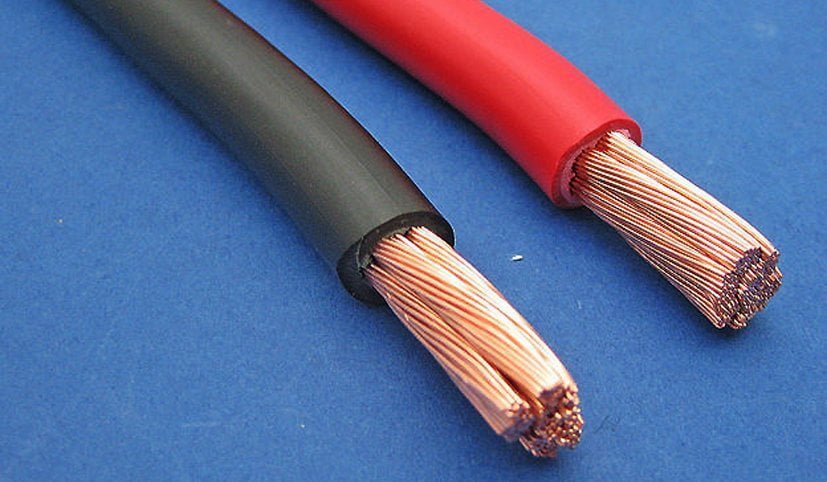Correct size cables for RVs
Using correct size cables for RVs is essential, this article explains how and why. If not, your fridge may not cool or batteries full charge for the entire life of your RV.
Using correct size cables for RVs is essential – here’s why
As with pumping water through a pipe, electricity dislikes flowing through cables. It reduces its effective pressure. This is particularly for the low voltage (typically 12 volts) used in almost all RVs. Unless truly adequate, whatever is being powered will never work as intended. This particularly affects fridge cooling and auxiliary battery charging.
This applies not only to ‘do-yourself’ cabling. The copper used in cables is very costly. As a result, many RVs have far lighter cabling than desired. The major issues, however, are due to misunderstanding how cable sizes are defined.
Using correct size cables for RVs is essential – the energy rating trap
It is not uncommon when in an auto-parts store, to overhear a buyer ask for (say) 10-amp cable. Few sales staff, however, know that cable rating is not a recommendation. It indicates only the current that cable carries without seriously overheating. It does not indicate voltage drop. ‘Fifteen amp’ cable powering a three-way fridge may thus be fine if a metre or two long. It may, however, drop a volt or more if several metres away.

Top quality low voltage cable looks like this. The copper conductor is thick and the insulation is thin. Pic: rvbooks.com.au
Using correct size cables for RVs is essential – the auto cable trap
Vehicle and appliance makers specify cable sizes in two main ways. One is the USA’s BS (Browne and Sharpe) or the all-but-identical AWG (American Wire Gauge) sizes. The other is ISO (International Standards Organisation) sizes. Both relate to the cable’s current-carrying copper area. The latter shows it in mm².
Auto cable does not follow the above. Is what you are often sold by auto-parts and chain-stores. It is marketed in sizes numerically identical to ISO’s – e.g. 4.0 mm². But 4 mm auto cable is not 4.0 square mm. It is the cable’s overall diameter: i.e. – it includes the insulation. That ‘rating’ is literally the size hole you can just push the cable through.
Even if you ask specifically for (say) 4.0 square millimetre cable it’s all but certain the shop will sell you 4 mm² auto cable. Sales staff are rarely know about of this issue – let alone why it matters. Most reels of auto cable do however reveal the copper size in the fine print on the reel. It is usually shown also in the makers’ handbooks.
Auto cables’ copper content varies with price. Most 4 mm auto cable is typically 1.8 – 2.0 mm² – but maybe only 1.5 mm². Typical 2.5 mm² auto cable may have the copper of a bare 0.5 mm². The 6 mm auto cable is not too bad (typically 4.7 mm²).
Starter motor cable
Be particularly wary when buying high current cable, e.g. for starter cable wiring, or cable jump starting. Much on sale has unnecessarily thick insulation and far too thin copper. Price here is a good guide: high-quality starter cable is at least A$20 per metre and very heavy.
Because of this wide misunderstanding, a non-electrician is likely to use cabling that may be a mere 25% of that required. It is why so many RV electric fridges fail to cool in hot climates and batteries are far from fully charged.
There is nothing wrong technically with the better types of auto cable. But you must know the copper content area.
Using correct size cables for RVs is essential – read more
It is feasible to compare AWG/BS and ISO sizes (Solar Success, Solar That Really Works! and Caravan & Motorhome Electrics include such charts) but is not feasible to provide anything but a very guide for auto cable. All our books explain in detail that required to assess the cable sizes needed.




